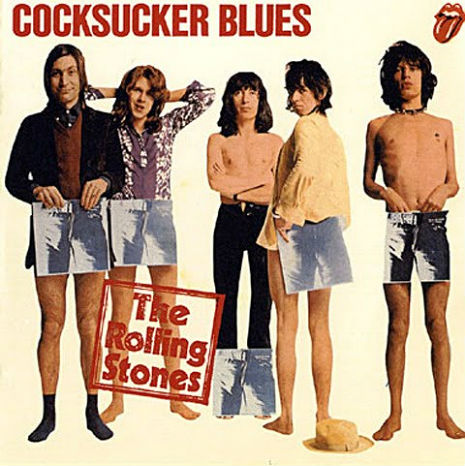
It was a little after three o’clock on a Saturday afternoon, when the dark green Cherokee jeep, loaded with canisters of propane gas, hurtled towards the Departure zone at Glasgow International Airport. The driver was saying prayers and asking for god’s help, when his vehicle hit security bollards and burst into flames. 28-year-old, Kafeel Ahmed had intended that the jeep would crash through the glass doors, enter into the airport concourse, where it would blow-up, killing as many of the men, women and children who queued patiently for their holiday flights.
It was June 30 2007, and this was the first terrorist attack in Scotland since PanAm Flight 103 exploded over Lockerbie in 1988. Little could Ahmed, or his co-conspirator Dr. Bilal Abdullah, have known that their actions were not to lead to holy martyrdom, but rather to the resurrection of one of the funniest, most popular and successful comedy creations of the last 50 years.
In a hotel room in Budapest, the writer Ian Pattison watched the images beamed from Glasgow onto a flickering TV screen, as the would-be terrorists were arrested, all Pattison could think of was one question: “What would Rab C Nesbitt make of this?”
Fall, present day, the trees are cashing in their savings, and the streets are covered with gold. I meet Ian in a coffee house, in Glasgow’s West End, a background of children and mothers laughing and chatting, and the hiss of an espresso machine. It’s a clear day, and we have a long sweeping view down to the Clyde and across the water to the high rises and tenements of Govan beyond, home to the fictional Rab C. Nesbitt - “the original unemployed man”, whose comic television adventures have brought national acclaim, incredible viewing figures and a cabinet full of awards.
Pattison looks relaxed, toned and much younger than his grey hair implies, and he must be older than he looks for It’s twenty-five years since he first dreamt up the alcoholic, head-bandaged street philosopher Rab C. Nesbitt:
“It was New Year’s Eve,” recalls Pattison, “And I was married and living in this masionette apartment in the north of England. Now I’m an anti-social person and when the front doorbell went, I said to my then wife, ‘That’ll be them from downstairs coming to First Foot, I don’t want to see these people. You entertain them, give them a drink and send them on their way. I’ll go upstairs and you tell them I’m in Glasgow.’
“I go upstairs to ‘Glasgow’, but wives don’t always do what you ask them, and these two neighbors sat there until about 5am knocking back the swally. I was upstairs fuming, wondering what can I do? I just can’t suddenly materialize – I’m in Glasgow!
“So I had a notebook up there, because I used write in the wee room, and I started trying to write something about a Liverpool councilor, but it wasn’t working. Then suddenly, I don’t know why, this mutated into a Glasgow speech rhythm, and in about 10 minutes I’d written the first Nesbitt monologue.
“I’ve no idea where it came from. All I knew about him was he raved, he had a head bandage and wore trainers.””
It was a piece of genius inspiration and Ian passed it on to Colin Gilbert, producer of the sketch show Naked Video. Gilbert liked it, but the actor chosen to play the part, Gregor Fisher, wasn’t so keen.
“There was no inkling of developing the character. I just knew it was a character piece, that is to say you weren’t going from gag to gag to gag. I just knew if it got into Gregor’s hands, I knew what he could do with it, and how he would play it. The trouble was persuading Gregor to do it.”
Anyone who has seen Fisher’s work will know that he is a brilliantly gifted actor, with a warmth and subtlety most Hollywood actors would pawn their looks to possess. I first saw Fisher as an unforgettable, happy-go-lucky, wide-boy in Peter MacDougall’s brilliant Just a Boy’s Game, then a few years later stealing the crappy eighties version of 1984 with a cameo role from under the noses of Richard Burton and John Hurt.
Now Naked Video had made Fisher a household name, on the back of his incredible comic acting, but when presented with a new character to play, he was less than impressed by Pattison’s latest creation.
“Gregor read it and said it was as funny as cancer,” Pattison recalls.
Thankfully, Head of the Comedy Unit, Colin Gilbert was on hand to quietly help matters along. Gilbert is a legend in TV comedy, with a long list of ground-breaking shows from Nesbitt to The Limmy Show, Still Game and Gary - Tank Commander on his long and impressive CV. Indeed, Gilbert with his white hair and beard and twinkling eyes is a polar bear disguised as a man - he may look nice and cuddly, but underneath you know there is this formidable energy just waiting for its moment.
“Colin quietly insisted, and Gregor tried it 2 or 3 times, and by the third time, I think Gregor began to think maybe I’m wrongish, and we never thought any more about it. But when the show went out, people picked up on this drunk character, largely because of Gregor’s eye-catching performance.”
Rab C Nesbitt returns to BBC 2 for 6 weeks from Wednesday 5th October at 22:00 hours
The full interview with Ian Pattison and more from Rab C Nesbitt, after the jump…









